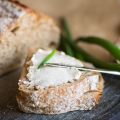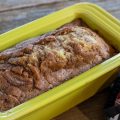The tangy twang of sourdough bread has captured the hearts of many, but what if you’re craving something a little sweeter? Fear not, fellow bread enthusiasts! Forget everything you thought you knew about sourdough’s limitations – it’s time to create loaves that will make your sweet tooth dance. Surprise your senses with a sweet sourdough using my tips!

Table of Contents
- Selecting Your Ingredients
- Adjusting Fermentation Time
- Sweeteners You Can Use
- Include Your Favorite Fruits
- Hydration Levels
- Baking Techniques
- Flavor Pairings and Serving Suggestions
- Sweet!
- How to Make Sourdough More Sweet: FAQs
Selecting Your Ingredients
While most sourdough recipes call for bread flour or all-purpose flour, you can experiment with different types of flour to add a touch of sweetness. Try incorporating some whole wheat flour, which has a naturally nutty and slightly sweet flavor. Another option is to use a small portion of rye flour, which can contribute a subtle sweetness and depth to your loaf.
If you want to boost the sweetness of your sourdough without overpowering its unique tang, consider adding natural sweeteners to your dough. Honey is a fantastic choice, as it not only adds sweetness but also contributes to a beautiful golden crust. Maple syrup is another option that can lend a rich, caramel-like flavor to your bread. Remember to start with small amounts and adjust according to your taste preferences.
Beyond flour and sweeteners, there are plenty of other ingredients you can add to your sourdough to make it sweeter and more flavorful. Dried fruits, such as raisins, cranberries, or apricots, can provide bursts of sweetness throughout your loaf. Nuts, like walnuts or pecans, can add a delightful crunch and a hint of natural sweetness.
You can even experiment with spices like cinnamon, cardamom, or vanilla extract to create unique flavor profiles that complement the sweetness of your sourdough.
Adjusting Fermentation Time
The fermentation process is when flavors of sourdough develop, and you can actually use this to your advantage when trying to create a sweeter loaf.
If your goal is a sweeter sourdough, you might want to experiment with shorter fermentation times. This means letting your dough rise for a shorter period, typically around 4-6 hours at room temperature. During this time, the yeast will consume some of the sugars in the flour, but not all of them, leaving behind a slightly sweeter flavor profile.
Keep in mind that a shorter fermentation may also result in a less pronounced sourdough tang and a softer crust. Start by trying a shorter fermentation and gradually increase the time until you find the sweet spot that suits your taste buds.
Sweeteners You Can Use
Adding sweeteners is the obvious next step. This can also give you more control over the level of sweetness in your final loaf, and it’s a fun way to experiment with different flavors.
You certainly have a variety of options to choose from.
- Granulated sugar is a classic choice that will dissolve easily into your dough
- Brown sugar can add a hint of molasses flavor
- Honey and maple syrup can contribute their own unique tastes and aromas
- You can even try using natural sweeteners like coconut sugar or date syrup for a more complex, earthy sweetness
You’ll have to experiment in this, too, find the right balance. Too much sugar can actually inhibit the growth of your wild yeast, resulting in a dense, underproofed loaf.
A good rule of thumb is to start with a small amount, around 1-2 tablespoons per cup of flour, and gradually increase it until you achieve the desired level of sweetness.
Do not expect your outcome to be obviously sweet, though. Your bread’s sweetness will be subtle, as the sugar will also be consumed by the yeast during fermentation.
It’s best to incorporate any sweetener during the initial mixing stage, along with your flour, water, and starter. This allows the sweetener to be evenly distributed throughout the dough and gives the yeast a chance to start feeding on the added sugars. If you add the sweetener too late in the process, it may not fully incorporate and could throw off the balance of your dough.
Keep an eye on your dough’s consistency and adjust the liquid content as needed to accommodate the added sweetness.

Include Your Favorite Fruits
A natural way to add sweetness and depth to your sourdough is having fruits and nuts in your recipe.
The fruit possibilities are endless. Dried fruits are a popular choice because they won’t add too much extra moisture to your dough. Raisins, dried cranberries, apricots, and figs are all excellent options that will lend a chewy texture to your bread.
If you’re feeling adventurous, you can even try fresh or frozen berries, like blueberries or raspberries, for a burst of tangy sweetness.
Just be sure to adjust your liquid content accordingly to account for the added moisture.
To get evenly distributed dried fruits in your bread, give them a rough chop so they’re not too large. This will help them incorporate more easily into the dough. If you’re using fresh or frozen berries, toss them with a little flour before adding them to prevent them from sinking to the bottom of your loaf.
Hydration Levels
Did you know, the amount of water in your dough can have a surprising impact on the final taste of your sourdough?
A higher hydration dough (aka more water) can actually lead to a milder, sweeter taste, as the increased moisture allows the yeast to ferment more efficiently and produce more subtle flavors.
If your dough is too wet, it can become difficult to handle and may result in a overly soft, gummy texture. On the other hand, if your dough is too dry, it may not allow the yeast to work its magic and could result in a dense, heavy loaf. A good starting point is a hydration level of around 70-75%, which means for every 100 grams of flour, you’ll add 70-75 grams of water. From there, you can experiment with slightly higher or lower hydration levels to find the sweet spot that works for you.
You’ll also need to take into account any additional ingredients, like fruits or sweeteners. These might require you to adjust your hydration levels. These additions can absorb moisture from the dough, so you might need to increase your water content slightly to compensate. A good rule of thumb is to add an extra 1-2% hydration for every 10% of added ingredients. So, if you’re adding 20% dried fruit to your dough, you may want to increase your hydration by 2-4% to ensure your dough maintains the right consistency.
Baking Techniques
The way you bake your sourdough can also affect how sweet it tastes.
One easy way to make your sourdough sweeter is to bake it at a lower temperature. Instead of baking at 450°F (230°C), try baking at around 400°F (200°C). This lower temperature allows the sugars in the dough to caramelize more slowly, which can make your bread taste sweeter. Just remember that baking at a lower temperature might mean you need to bake your bread a little longer to make sure it’s fully cooked.
Paying attention to how long you bake your bread can also help make it sweeter. If you want a sweeter loaf, try baking your bread for a few minutes longer than you normally would. This extra time in the oven lets the crust get darker and more caramelized, which can make your bread taste sweeter overall. Be careful not to bake it for too long, though, or your crust might burn and your bread could get dry and crumbly.
Steam can also help make your sourdough sweeter. When you add steam to your oven during the first few minutes of baking, it keeps the outside of your dough moist. This moisture helps the sugars in the dough dissolve and caramelize more easily, which can give you a sweeter, more flavorful crust. To create steam in your oven, put a metal tray on the bottom rack and fill it with boiling water just before you put your bread in to bake.

Flavor Pairings and Serving Suggestions
My favorite part: exploring flavor pairings and serving suggestions!
Spreads are a great place to start. A generous smear of creamy, unsalted butter is a classic choice that will allow the natural sweetness of your bread to shine through. For a more indulgent treat, try spreading on some mascarpone cheese or whipped cream cheese. If you’re feeling adventurous, experiment with nut butters like almond or cashew butter for a delightful combination of sweet and savory flavors.
In addition to spreads, there are countless toppings you can add to your sweet sourdough to take it to the next level. Fresh fruits like sliced strawberries, raspberries, or peaches pair beautifully with the tangy sweetness of sourdough. You can also try drizzling some honey or maple syrup over your bread for an extra touch of sweetness. For a more decadent treat, sprinkle on some chocolate chips or chopped nuts like pecans or walnuts.
Sweet sourdough isn’t just delicious on its own – it also pairs wonderfully with a variety of other foods and drinks. For a satisfying breakfast, try toasting a slice of sweet sourdough and serving it alongside a steaming cup of coffee or tea. The bitterness of the coffee will balance out the sweetness of the bread for a perfect morning combination. Sweet sourdough also makes a great base for French toast or bread pudding, adding an extra layer of flavor to these classic desserts.
Don’t be afraid to get creative with your sweet sourdough pairings. Try using it as a base for a fruit and cheese plate, pairing it with creamy brie and fresh grapes. Or, use it to make mini sandwiches with your favorite fillings, like Nutella and sliced bananas or cream cheese and strawberry jam.
Sweet!
Slice into that warm, sweet sourdough. So many sweet, fermented delights awaits, and there’s so much to try. Happy baking, and may your sourdough always rise to the occasion—both in height and in sweetness!
How to Make Sourdough More Sweet: FAQs
Can I add sugar to my sourdough bread?
Yes, you can add sugar to your sourdough bread to make it sweeter. However, be mindful of the amount, as too much sugar can inhibit the growth of wild yeast, resulting in a dense loaf. Start with a small amount, around 1-2 tablespoons per cup of flour, and gradually increase until you achieve the desired sweetness.
How can I enhance my sourdough flavor?
To enhance your sourdough flavor, experiment with different flours, like whole wheat or rye, which can add depth and complexity. Adjust fermentation times to achieve a milder or tangier taste, and consider adding fruits, nuts, or spices for unique flavor profiles. Baking techniques, such as using steam or adjusting oven temperature, can also impact the final flavor of your sourdough.
Can sourdough bread taste sweet?
Yes, sourdough bread can taste sweet! By incorporating natural sweeteners like honey or maple syrup, experimenting with different flours, and adjusting fermentation times, you can create a delightfully sweet sourdough loaf. Baking techniques, such as using a lower oven temperature or baking for a few extra minutes, can also enhance the caramelization of sugars, resulting in a sweeter taste.
What does adding honey to sourdough do?
Adding honey to sourdough not only imparts a delightful sweetness but also contributes to a beautiful golden crust. Honey is a natural humectant, meaning it helps retain moisture, resulting in a softer, more tender crumb. Additionally, the natural sugars in honey provide food for the wild yeast, which can lead to a more active fermentation and a flavorful loaf.






